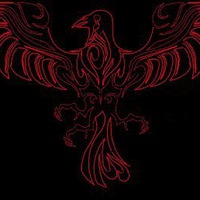
Две окружности касаются внешним образом в точке C общая внешняя касательная касается первой
окружности в точке A а второй в точке B прямая BC пересекает сторону окружности в точке D отличной от точки C а)Докажите что треугольник ABC прямоугольный б)найдите АС если BC=16 CD=9 0
0
 0
0
Ответы на вопрос
 Внимание! Ответы на вопросы дают живые люди. Они могут содержать ошибочную информацию, заблуждения, а также ответы могут быть сгенерированы нейросетями. Будьте внимательны. Если вы уверены, что ответ неверный, нажмите кнопку "Пожаловаться" под ответом.
Внимание! Ответы на вопросы дают живые люди. Они могут содержать ошибочную информацию, заблуждения, а также ответы могут быть сгенерированы нейросетями. Будьте внимательны. Если вы уверены, что ответ неверный, нажмите кнопку "Пожаловаться" под ответом.



 0
0
 0
0

I will answer your question in detail. Two circles touch externally at point C. The common external tangent touches the first circle at point A and the second circle at point B. The line BC intersects the side of the circle at point D different from point C.
a) To prove that triangle ABC is right-angled, we can use the following theorem: If a tangent and a secant are drawn to a circle from an external point, then the square of the length of the tangent is equal to the product of the lengths of the secant and its external segment.
Applying this theorem to the tangents AB and AC, we get:
AB^2 = AD * BD
AC^2 = CD * CE
where E is the intersection of AC and the second circle.
Adding these two equations, we get:
AB^2 + AC^2 = AD * BD + CD * CE
But since AD + CD = BD + CE = BC, we can write:
AB^2 + AC^2 = BC^2
This is the Pythagorean theorem, which means that triangle ABC is right-angled at C.
b) To find AC, we can use the Pythagorean theorem again:
AC^2 = BC^2 - AB^2
We know that BC = 16 and CD = 9, so we can find CE by subtracting:
CE = BC - CD = 16 - 9 = 7
Now, we can use the theorem from part a) to find AB:
AB^2 = AD * BD = CD * CE = 9 * 7 = 63
Therefore, we have:
AC^2 = 16^2 - 63 = 193
Taking the square root of both sides, we get:
AC = sqrt(193) ≈ 13.89
So, the length of AC is approximately 13.89 units.
 0
0
 0
0
Топ вопросов за вчера в категории Геометрия
Последние заданные вопросы в категории Геометрия
-
Математика
-
Литература
-
Алгебра
-
Русский язык
-
Геометрия
-
Английский язык
-
Химия
-
Физика
-
Биология
-
Другие предметы
-
История
-
Обществознание
-
Окружающий мир
-
География
-
Українська мова
-
Информатика
-
Українська література
-
Қазақ тiлi
-
Экономика
-
Музыка
-
Право
-
Беларуская мова
-
Французский язык
-
Немецкий язык
-
МХК
-
ОБЖ
-
Психология
-
Физкультура и спорт
-
Астрономия
-
Кыргыз тили
-
Оʻzbek tili





















